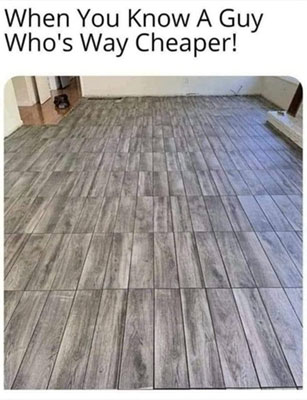
More Articles

You've got questions? We've got answers!
Last month we addressed a number of questions we often hear regarding cleaning the HVAC systems in a home. We continue this month with a bunch more questions we get asked. This FAQ will arm you with even more information so you can make informed decisions about what goes on when cleaning the air conditioning systems in a residence.
Cleaning the air conditioning systems in a home. Frequenty Asked Questions. Part Two
My air conditioning company services my A/C every year. Do I still need to clean it?

A new A/C unit can cost well over $10,000, so neglect of it is not an option. An annual checkup by a qualified HVAC contractor is always a good idea! They will fine tuned everything for the best efficiency, top up the coolant, check out the electrical and will usually install a new air filter among many other things. But that is not the same thing as cleaning the whole system, which is only needed avery 5-10 years. Just as doing an annual service will extend its usable life, so will cleaning.
What if I'm noticing dust and dirt from only one vent? Does the whole system still need to be cleaned?
That's not a good idea. While you may notice dirt in only one area, remember that the whole system is tied together. The same air (along with the dust it carries) moves through all of the ducts. Since a system only needs cleaning on a relatively infrequent basis, it's our strong recommendation that if you're going to clean it, clean the whole thing including the equipment, all of the ducts and all of the vents. To do otherwise is only a bandage and is likely a waste of time and money.
Could there be asbestos insulation on the A/C system?

These days, asbestos is not found in homes often as it was in the past. But up until the late 1970's and 1980's, asbestos was still being used to insulate A/C ductwork in residential construction. If the home was built in the mid 80's or later it is extremely unlikely that it will contain asbestos. In 1989 asbestos was fully banned for this use. But A/C manufacturers and installers began to move away from it as early as the late 1960's as the revelations of the health effects became more and more known. Further, since then, with renovations and remodels, existing asbestos has been removed more often than not, so even in older homes, asbestos insulation is more the exception than the rule.
If it is still in the home, as long as it has not been disturbed or isn't "friable" (falling apart), it generally does not pose a hazard. However, it is rarely a good idea to try to clean a system insulated with asbestos. Only if it is in very solid condition will we ever clean a system insulated with asbestos. The bottom line is that even though removing the asbestos and replacing the ductwork is expensive, it might be the best route to take.
Would it be better to simply replace all the ducts rather than clean them?
A brand new system would be more pristeen and would give more life to the system. But at the same time, it would cost many thousands of dollars more.
Sometimes we encounter a system that has reached the point that we can only recommend it be replaced - bad rodent infestation, water damage, badly deteriorating ductwork or even a totally inefficient layout. But in most cases, cleaning a system more than meets the needs of the homeowner. Would one feel the need to buy a new car because the one he bought last year is now dirty?
Can flexible ducts be cleaned?

Of course!
Flexible Ducting, or "flex ducts" are light-weight, fully insulated, easy to install, and economical. Flex ducts are the most common type of ductwork in new construction and have been for several decades even in high end homes. As with anything else, there are various qualities of manufacture, but for the most part, flex ducts should last indefinitely if properly installed.
But can they be cleaned? Yes, they can. Machado uses various remote cleaning methods that brush the interior surfaces along with compressed air and a high volume HEPA filtered vacuum to remove the loosened particles and debris from the interior of the system. Even if some of the ducts are concealed in walls, ceilings or attics, the remote cleaning enables us to get to most if not all of the interior surfaces of the ductwork.
Unless the flex duct itself is detriorating or crumbling, they can be cleaned very thoroughly.
The ductwork is beneath the concrete slab of the floor. Can it be cleaned?
In most cases, yes.
Subterranean ductwork is where the duct itself is embedded in or below the concrete slab of a home. These, of course, cannot be accessed by a workman to clean by hand. Remote methods are used to brush and vacuum the interior surfaces as much as possible from the floor vents as well as from the furnace side of the duct layout.
Things that may prevent the possibiliy of cleaning would be if the duct itself rusted out and collapsed, or if it full of sand or mud, or there is a water leak continually flooding the duct. There are other problems, but again, in most cases, underground ducts can be adequately cleaned.
There was a fire or water damage. What is the best thing to do?

Fire, smoke and water damage in a home often go hand-in-hand. Water is used to douse the fire so brings water damage into the picture in addition to the fire and smoke damage. Water from a roof leak or a busted water pipe will saturate the structure of the home.
In either case, remediation of either or both of these situations involves many steps including cleaning the HVAC system. But the very first thing to do after getting the insurance company involved, is to handle the source of the water and dry all moisture from the house (basement, walls, floors) as soon as possible. If it is allowed to sit there for more than a few days, the liklihood of mold developing is almost a guarantee, not to mention the other lasting effects to the building materials.
There are many experienced and highly qualified contractors that specialize in disaster response and remediation. We highly recommend going this route. They will manage the whole ordeal in the sequence that should be followed. Trust us on this one. Hire a pro.
Duct cleaning is vital as part of this process, but it is one of the final steps after the bulk of reconstruction has been completed.
See George Machado's article regarding fires and smoke damage:
Now that the Smoke has Cleared
Does it make a mess?
The crews always take care with any home. They wear booties, lay down tarps where needed and have a great deal of experience working in homes of every type. The vacuums used are HEPA filtered vacuums. No worries.
It can be disruptive, however. The vacuums make a good deal of noise, the men are moving about throughout the whole home to access the whole system. But there is not dust flying all over or anything like that. With the noise, just like any other home improvement activity, it can be difficult to carry out your normal household business while the work is being done. But a typical home will be completed within a day, so the disruption will be very limited.
Keep an eye out for our flyer "What you can expect when you get your A/C system cleaned" which will go over the general sequence, what you can do to prepare and answer some common questions. Coming soon!
What does it cost?

We clean A/C systems serving small one bedroom apartments up to large estate homes, so the pricing covers a wide range. Each home is different and quotes are given for each home taking into account the specifics of that home.
That being said, one could expect to pay anywhere from $700-$1,100 to clean the A/C system serving a typical home of 1,700-2,500 square feet.
I got a flyer saying "Whole House Cleaing $99!"

It is difficult to answer this without laughing. The old saying, "You get what you pay for" applies here as much as anywhere else. We could hardly get our trucks out of the driveway for $99.
But there is another side to it. It's called Upselling. You ask them into your home, pay them $99 and they use that opportunity to sell you all kinds of things: Overpriced electrostatic filters, unnecessary new grill covers, you name it. The $99 typically does NOT include cleaning the entirety of the system from the fresh air intake, to the furnace through to the registers on the walls. We've heard stories where the company came in for the $99 and with great urgency told the homeowner that they are lucky they called! Your furnace is about to explode and needs to be replaced immediately! Or all the ducts need to be replaced, or the condenser is shot. We've heard them all. I don't think it needs any further explaination.
With Machado, you will know what you're going to pay ahead of time.

Well, that wraps up this part of the Frequently Asked Questions!
But wait! There's more!
Next month we'll cover just how it is done. How do we go about cleaning a residential HVAC system? We'll describe the steps taken, what precautions we take and how, when we're done, the system is in a clean and hygienic condition. As an added bonus, we'll include a printable "What you can expect" flyer.
Until next time!






